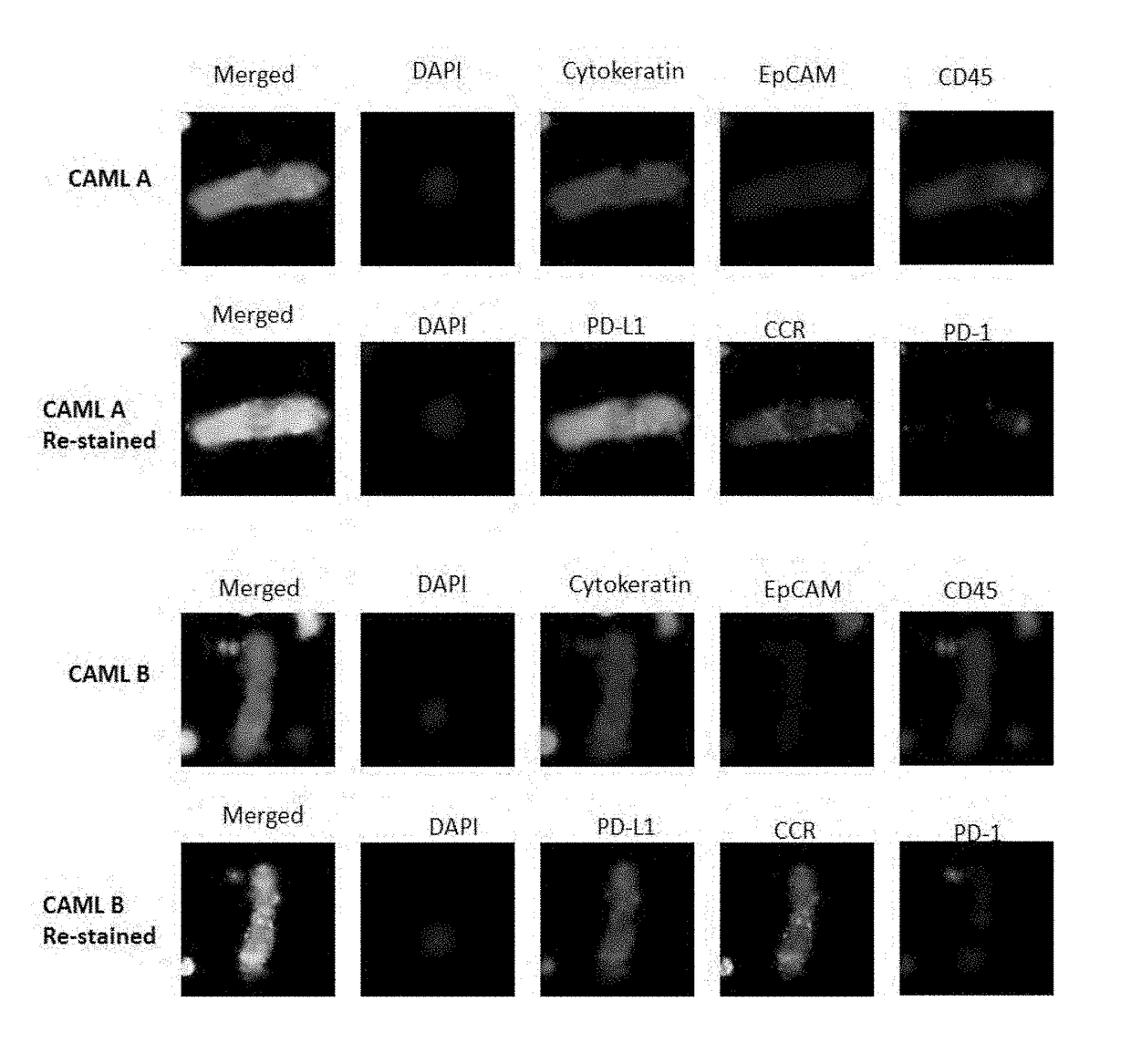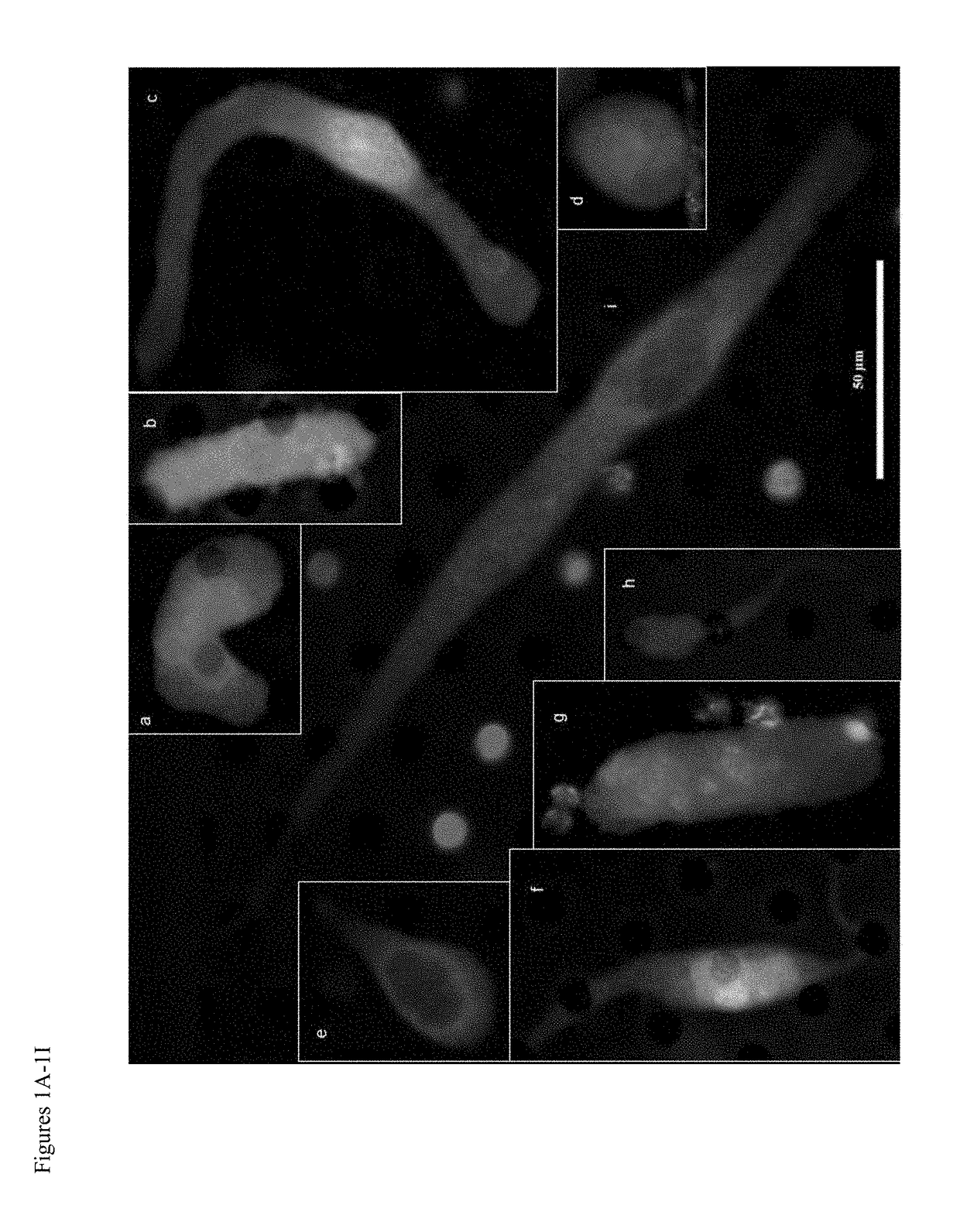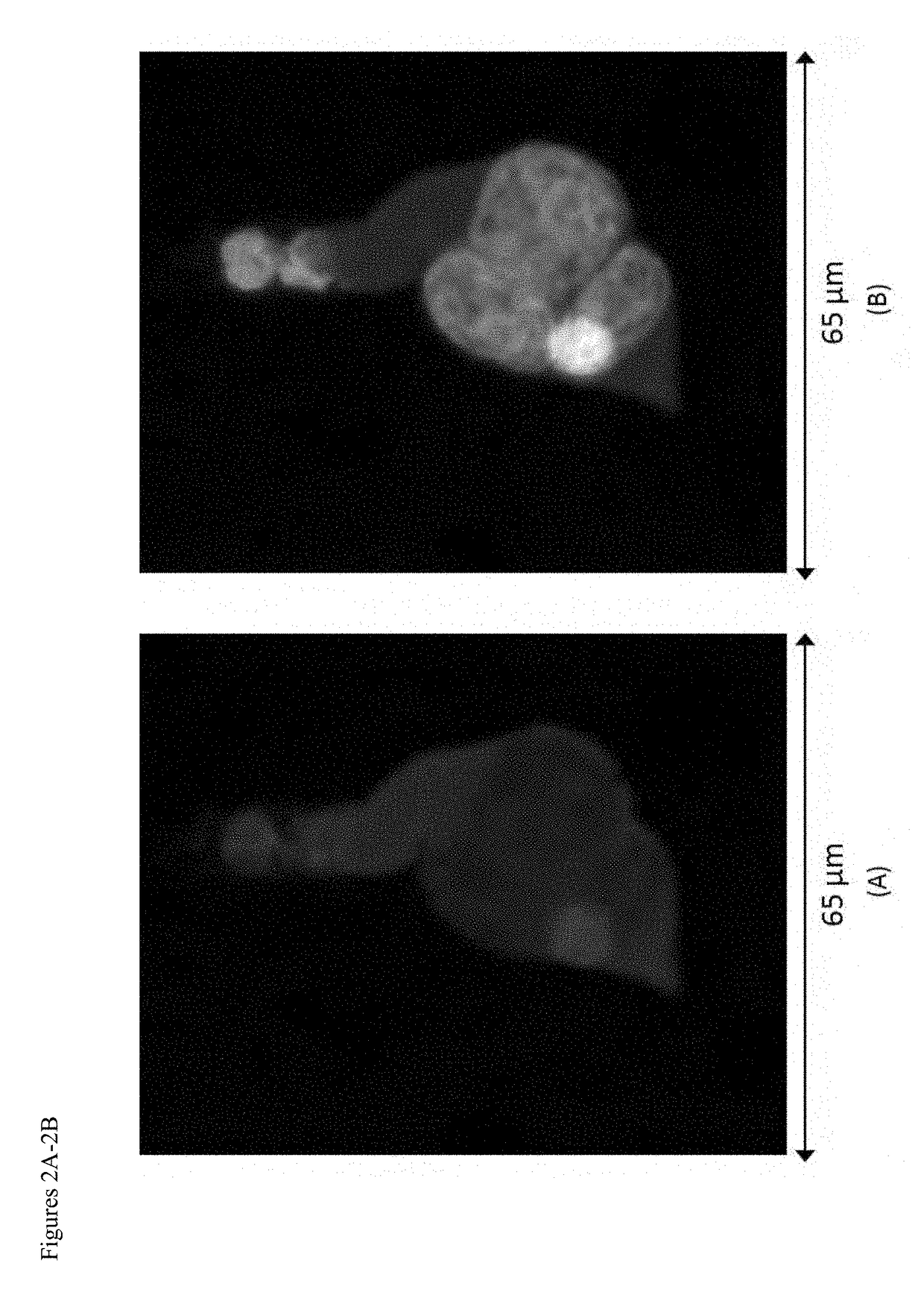Use of circulating cell biomarkers in the blood for detection and diagnosis of diseases and methods of isolating them
- Summary
- Abstract
- Description
- Claims
- Application Information
AI Technical Summary
Benefits of technology
Problems solved by technology
Method used
Image
Examples
second embodiment
[0208]In a second embodiment, the invention is directed to methods for diagnosing cancer in a subject, comprising detecting CAMLs in a biological sample from a subject, wherein when CAMLs are detected in the biological sample, the subject is diagnosed with cancer. The identification of the specific type of cancer can be performed by standard methods, such as staining for cancer markers. The identification of the specific type of cancer can also be performed by staining for cancer markers and then re-staining the same cells for additional markers. In certain aspects, the methods encompassed by this embodiment also include detecting CTCs in the biological sample, wherein when CAMLs and CTCs are detected in the biological sample, the subject is diagnosed with cancer. In certain aspects, the methods encompassed by this embodiment also include detecting CTCs bound to a WBC and / or detecting an apoptotic CTC bound to a WBC in the biological sample, wherein when CTCs bound to a WBC and / or a...
third embodiment
[0209]In a third embodiment, the invention is directed to methods for detecting recurrence of cancer in a subject, comprising detecting CAMLs in a biological sample from a subject previously treated for cancer, wherein when CAMLs are detected in the biological sample, recurrence of cancer is detected. The identification of the specific type of cancer can be performed by standard methods, such as staining for cancer markers. The identification of the specific type of cancer can also be performed by staining for cancer markers and then re-staining the same cells for additional markers. In certain aspects, the methods encompassed by this embodiment also include detecting CTCs and / or WBCs bound to CTCs in the biological sample, wherein when CAMLs, CTCs and WBCs bound to CTCs are detected in the biological sample, recurrence of cancer is detected. To identify the recurrence of the specific cancer, the stains should specifically include markers associated with the cancer in remission.
fourth embodiment
[0210]In a fourth embodiment, the invention is directed to methods for confirming a diagnosis of cancer in a subject, comprising detecting CAMLs in a biological sample from a subject diagnosed with cancer, wherein when CAMLs are detected in the biological sample, a diagnosis of cancer is confirmed in the subject. The invasive confirmation by tissue biopsy may be avoided by most patients; the tissue biopsy would be necessary only when CAMLs are present. In certain aspects, the methods encompassed by this embodiment also include detecting CTCs and / or WBCs bound to CTCs in the biological sample, wherein when one or more of CAMLs, CTCs and WBCs bound to CTCs are detected in the biological sample, a diagnosis of cancer is confirmed in the subject. In particular aspects, the initial cancer diagnosis is via mammography, PSA test, presence of CA125, CT, MRI or PET imaging. In a particular aspect, the subject is suspected of having cancer. The identification of the specific type of cancer ca...
PUM
| Property | Measurement | Unit |
|---|---|---|
| Pore size | aaaaa | aaaaa |
| Pore size | aaaaa | aaaaa |
| Time | aaaaa | aaaaa |
Abstract
Description
Claims
Application Information
 Login to View More
Login to View More - R&D
- Intellectual Property
- Life Sciences
- Materials
- Tech Scout
- Unparalleled Data Quality
- Higher Quality Content
- 60% Fewer Hallucinations
Browse by: Latest US Patents, China's latest patents, Technical Efficacy Thesaurus, Application Domain, Technology Topic, Popular Technical Reports.
© 2025 PatSnap. All rights reserved.Legal|Privacy policy|Modern Slavery Act Transparency Statement|Sitemap|About US| Contact US: help@patsnap.com



